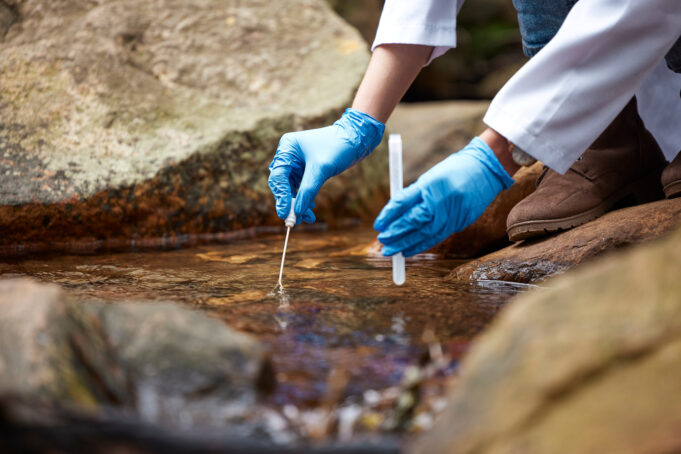The discovery of a new, more affordable, and portable method for detecting per- and polyfluoroalkyl substances (PFAS) in water is a significant stride forward for water treatment professionals facing a changing regulatory landscape. This innovative approach, developed by researchers at the University of Massachusetts Amherst and recently published in Science Advances, has the potential to revolutionize how we monitor and mitigate PFAS contamination. Let’s dive into this new technology and how it could potentially transform the regulatory landscape for PFAS contamination.
PFAS: A Persistent Threat
PFAS, often dubbed “forever chemicals,” are a class of synthetic compounds with widespread industrial applications, including manufacturing, firefighting, and textiles. Their resistance to degradation has led to their accumulation in water bodies worldwide, posing serious health risks. Exposure to PFAS has been linked to a myriad of health issues, such as cancer, liver damage, and reproductive problems.
Traditional Testing Limitations
Traditional methods for detecting PFAS, such as liquid chromatography-mass spectrometry (LC-MS), are highly accurate but come with significant drawbacks. These methods are expensive, require specialized equipment and skilled operators, and are not easily portable. This makes widespread testing challenging, particularly in remote or underserved areas.
Enter A Novel Approach: Nanopore Technology
The UMass Amherst researchers have introduced a novel approach that leverages nanopore technology to detect PFAS. This method involves incorporating cyclodextrin molecules into nanopores, which can selectively bind to PFAS molecules. As PFAS molecules traverse the nanopore, they alter the electrical current, enabling their detection.
Key Advantages
This innovative approach addresses the complex challenges posed by traditional PFAS testing methods, offering:
- Affordability: The new method is significantly more cost-effective than traditional LC-MS, making it accessible to a broader range of users, including smaller municipalities and private water systems.
- Portability: The device’s portability enables on-site testing and rapid analysis, streamlining the monitoring process and allowing for timely decision-making.
- Sensitivity: While not as sensitive as LC-MS, the new method can still detect PFAS at levels relevant to public health concerns, particularly in areas with significant contamination.
- Simplicity: The device is relatively simple to operate, requiring minimal training, which reduces the need for specialized expertise.
Potential Applications
The new PFAS testing method has a wide range of potential applications, including:
- Water Quality Monitoring: The new method can be employed to monitor water quality in diverse settings, including drinking water sources, wastewater treatment plants, and industrial sites. Regular monitoring can help identify potential contamination sources and track trends over time.
- Environmental Remediation: It can aid in identifying and prioritizing sites for remediation efforts, optimizing resource allocation and ensuring that resources are directed to areas of greatest need.
- Regulatory Compliance: The method can be used to ensure compliance with regulatory standards for PFAS, mitigating potential legal and environmental risks. By providing a more accessible and cost-effective testing method, it can help facilities meet regulatory requirements more efficiently.
- Public Health Protection: By enabling more widespread and frequent monitoring, the new method can help identify and address PFAS contamination in drinking water sources, reducing exposure risks to the public.
The Future of PFAS Detection
While the new PFAS testing method demonstrates significant promise, further research and development are necessary to enhance its sensitivity and expand its detection capabilities. As the technology matures, it has the potential to become an invaluable tool for water treatment professionals, enabling more effective monitoring, treatment, and urgent prevention of PFAS contamination.
The future of clean water depends on our ability to innovate. With this new tool in our arsenal, we can work towards that vision and ensure a healthier planet for generations to come.
SOURCES: Science Advances, Smart Water Magazine





